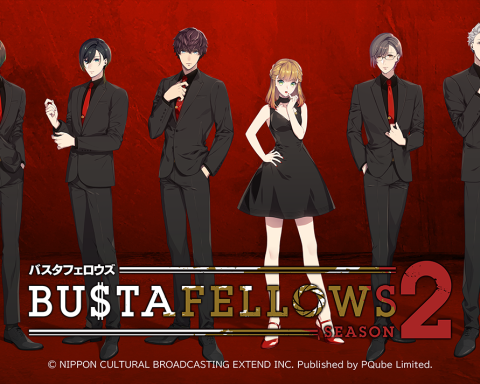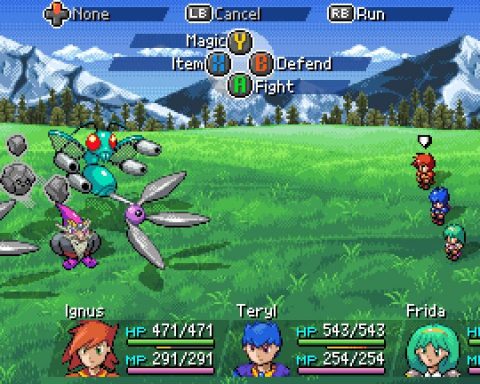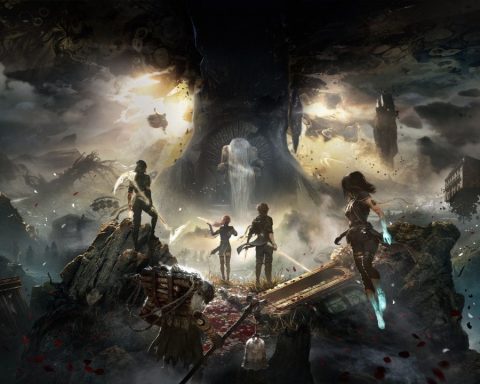“The people in noir fiction are dark and doomed—they are losers, they are pessimistic, they are hopeless. If you have a private eye, the private eye is a hero; and he’s going to solve the crime and the bad guy will be caught. That’s a happy ending, but that’s not a noir ending.” No heroes and no happy endings. Penzler writes in a foreword to the anthology about “the lost characters in noir who are caught in the inescapable prisons of their own construction.” This essay that appeared in The New Yorker back in 2010 is a beautiful encapsulation of what makes noir so enduring and compelling. Noir was a part of cinema almost at cinema’s inception. Noir was a classic literary genre well before CSI was dreamed up. Noir has survived long enough to have a modern movement, neo-noir, which re-frames the aesthetic techniques of yesteryear to grapple with today’s challenges. Have you seen Nightcrawler? You probably should. Right after you play The Silver Case.
I think it has been well-established at this point that I am a fan of Goichi Suda and his ability to blend the crass and the elevated surreal into games that are consistently darkly funny, punk, and transgressive. To my mind, The Silver Case and its sequel (really one long game and should be played in one go) is his magnum opus, and the perfect realisation of what Suda, the artist, stands for. Sure you might look at these now and dismiss them against the weight of what Suda has done since; he made one of the few free-to-play games that had some kind of artistic credibility behind them. He worked with James Gunn to make a fanservicey action game that was so effective at its subversion that it confounded a bunch of critics. He made Shadows of the Damned and… well, he himself doesn’t like talking about that one. And of course, he’s got No More Heroes and Killer 7 under his belt and those are rightfully considered classics. But for all that The Silver Case has a density and purity to it. It doesn’t play particularly well, when it has gameplay bits, but the complex, weaving narrative is – for those that can piece it together – as good as anything that Raymond Chandler himself produced.
The Silver Case takes place within a dark and miserable city called the “24 Wards.” Murders are occurring across the city, apparently by a serial killer who should have been contained. It’s up to the Heinous Crimes Unit (HCU) within the police force of this dark, rotten city, to work out exactly what’s going on, and, naturally, they come to all kinds of shocking revelations. The sequel, The 25th Ward, takes place seven years later, and features a different set of characters, but that same gripping noirish darkness and dystopic vision for urban living.
As I wrote in an interview that I conducted with Suda a few years ago, The Silver Case and its sequel were the product of some rather academic curiosity on Suda’s part – an effort to get into the mind of killers, as it were. As I wrote in the interview: So Suda certainly didn’t set out to make a dark game in The Silver Case. Instead, the original seed for the game was a bit of academic curiosity on his part; he was interested in simply exploring the nature of crime – a question that Suda found intriguing from the fallout to Japan’s infamous Sakakibara (Kobe Child Murders) case in 1997.
“After that crime, the government started to ask serious questions about whether they needed to regulate media and entertainment, and the way films and games dealt with crime, especially youth crime,” Suda said to me. “So I started to think about crime – why do these things happen and how do they happen? And that was the launching point for The Silver Case. Amusingly enough I didn’t figure out the answer to “what is crime?” But as I started to really work on the game it became about more than that. I found it interesting to explore where does crime stem from – is it the person themselves, is the environment, the land they come from? All these questions came up as I was writing these two games.
“As I explored all of this, I came to realise that what was important was how the detectives themselves were grappling with these questions. What is justice for a detective? In a way all the answers to my questions come out there because each detective has their own philosophy on justice, and how they deal with criminals. It’s fluid.”
Perhaps what interested me the most from that interview, however, was the notion that Suda didn’t find his game to be all-that “dark.” Now we are talking about a man who has made his entire career out of working in dark genres like grindhouse and noir, and so playing in that space for so long as likely left him a little desensitised to just how dark his material can be. Most people would see it as I saw it on the first play-through, as a relatively standard Chandleresque noirish nightmare. But this time around I took much clearer notice of something I noted in my first play through, before promptly forgetting was a quality of the game: the Suda-trademarked subversion and satire is definitely there. I think part of the issue is that The Silver Case and its sequel do require a fair dose of concentration the first time through, with non-linear narratives and occasionally confusing design choices, these games aren’t overly inclined to let you enjoy them on another level. Once you’re familiar with it, however, on a second play through the dry, droll humour rolls easily, and entertainingly, and while the aesthetics remain firmly noirish, the narrative itself does come across as Suda at his most subtle with his humour, but also his most consistent.
The port of both games to the Nintendo Switch has been fairly straightforward – though I’ve appreciated the opportunity to have the two visual novels in a portable format, as I prefer for the genre. As I noted in my review of the Silver Case: The Silver Case adopts a similar spartan approach to storytelling as L.A. Confidential. It’s a visual novel that covers a lot of ground by keeping embellishments to a minimum, emphasising the key moments with vivid, often shocking, imagery. The mastery of the storytelling lies in that, despite the minimalist approach to the text, the characterisation is superb, and each and every character has their own distinct personality. You won’t like all of them; this is a noir tale, after all, but you’ll be left with no sense that any of the game’s characters are dry.
At the same time, Goichi Suda seems to have been influenced by the writings of William S. Burroughs, and particularly The Naked Lunch. I can’t say for certain if Suda has read Burroughs at some stage and then deliberately appropriated his style, but there are definitely elements of the game that reach the same kind of feverish storytelling of that masterpiece, particularly if you take into account the David Cronenberg film. There’s a similar sense of dissonance in the movement of the narrative, with conversations jumping around the place, and a very fluid understanding of time. The Silver Case is a linear story, for the most part, but the gaps between events are rarely defined, both in the moment-to-moment, as well as the overall structure of the storytelling. It’s very easy to be confused by those jumps, but at the same time there’s something so beautifully efficient about The Silver Case for people who are paying attention.
And as I wrote of the sequel: For its density, 25th Ward really does tell a great story, and eventually it becomes clear that a lot of the complexity is necessary to give the game its edgy tone, sharp wit, an darker themes. The noir genre in general is both complex and rich; I remember when, back when I was at school, I had to watch The Big Sleep and Blade Runner a few dozen times each to really start to pull them apart and dig deep into their themes, so I actually don’t have an issue with 25th Ward being like this. I only say all of this to warn players less comfortable with dense storytelling to not go in expecting a easy time of it.
People are going to dislike the gameplay bits, though. Goichi Suda enjoys sending people on hunts for needles in haystacks, and having to comb entire apartment blocks for a critical clue to push the narrative forward is going to aggravate some players. It doesn’t help that the interface is cumbersome as sin, too. Down in the corner of the screen, replacing a conventional menu for selecting actions like “Look”, “Talk” and “Move”, is a dice, which you need to manually spin around to arrive at the action that you need to take. This means that every time you want to talk to a character or move to a different location, your ability to do so is slowed right down by the need to manipulate this dice system.
There’s not really much else I can add to those two reviews for this Nintendo Switch release, but Goichi Suda and NISA bringing these two visual novel classics together to the Nintendo Switch is a good thing. Both are magnificent examples of what can be done to give games a literary quality, and going forward, no study of crime fiction or noir could be complete without considering The Silver Case up there with the likes of The Big Sleep or Chinatown. Japan actually has a very deep tradition in noir storytelling, and this is an excellent introduction to it.










A very interesting article on two very interesting games, and a designer that I’d never heard of. I love how you look beyond the surface at why games are designed the way they are (including interviews), and how that impacts the player. This is what reviews should be like, but you’re one of the very few who does it this way.
As usual you’ve inspired me to buy these games, so reading your articles is proving to be quite expensive…
Thank you for your original take on this and many other games.
I hope you love the games :-). Sorry to your wallet, but if it helps you discover something interesting to plat it’s a win all round 😀
Thank you for the kind comment!
The game arrived yesterday, it came with a soundtrack CD and an art booklet, very nice.
What annoys me about buying games is how difficult it is to find the good ones. And I don’t mean good in terms of execution or personal taste, but in terms of art. Games that were made because the designer wanted to say something, or experience something. Games that offer an experience, more than just a play through.
In bookstores these books are labelled literature. In movies these are labelled arthouse, but when it comes to games there is no label at all. One apparently just has to accidentally stumble across them on websites such as yours.
Do you have any tips on how to find “art games”?
Honestly, and I realise this is going to sound self-serving, but finding the websites and social media communities (particularly on Twitter and Reddit, I find) that champion this stuff is probably your best bet. The industry has been very slow in recognising “arthouse games” as a distinct “genre” to the mainstream and content-driven stuff. That lack of distinction annoys me a lot too.
I would also recommend making a habit of regularly checking in on itch.io. There’s a lot of terrible and broken stuff on there, but there are also so many gems and creative, artful things that it’s been my go-to website and store for finding interesting games for years now.
My trick is to check in once per week and do a search for “paid” games that were released in the last seven days. That filters through and gives you an up-to-date list of newer releases. That’s where my weekly itch.io news wraps largely come from.
This is pretty much what I’m doing, with the exception of itch.io, because I only do physical. It not easy though, you can’t just look at a game and spot it straight away. You need to investigate: is this a moneygrab, a game made for fun, or something with actual meaning behind it. You are one of the very few reviewers who can pull this off.
Sometimes the easiest way is to go to review aggregate sites and search for games that get 1’s and 10’s, but not much in between. The 1’s didn’t get the message, and the 10’s did.
I’m glad that this lack of distinction annoys you too, but I couldn’t help noticing that you don’t have this “arthouse-game” qualifier on your reviews either… Perhaps you could start a new trend by being the first, with the added benefit that you can make up your own name for it.